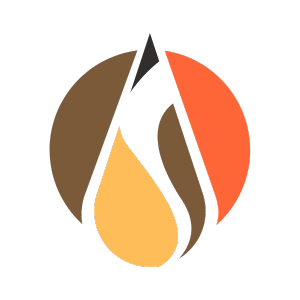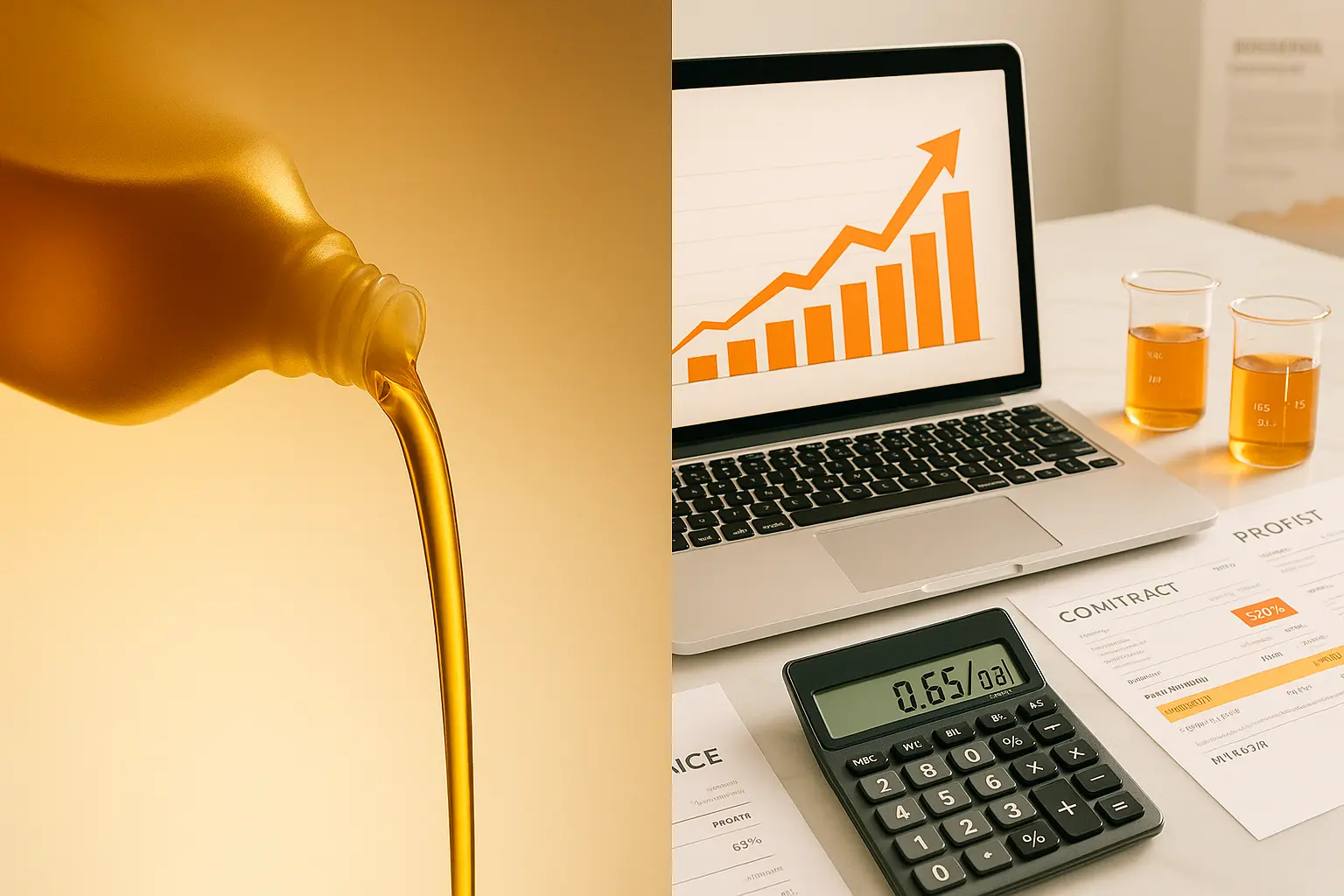Jump to a question:
How much can I get for used cooking oil?
Restaurants get paid $2.40-$3.60 per gallon for clean used cooking oil, with properly rendered oil earning 20% premiums while contaminated batches cost you disposal fees instead of generating revenue.
Payment depends on meeting minimum quality standards that UCO collectors require for biodiesel production. Clean oil free from water, food particles, and contaminants commands top dollar. Partners recycling through companies like Grease Connections earn between RM12,000-24,000 annually from regular collection.
Volume and purity determine your earnings potential. Restaurants producing 70 gallons monthly of quality oil generate steady income streams. However, contamination from grease trap dumping, motor oil, or burned foodstuffs destroys value completely, leaving you paying disposal costs.
Factors affecting payment: ✓ Oil purity (no water, soap, or solid foodstuffs) ✓ Monthly volume consistency ✓ Secure storage preventing contamination ✓ Proper filtering before collection ✓ Long-term partnership agreements
Standard operating procedures maximize revenue by ensuring employees maintain oil quality. Cool oil properly, filter out food particles, and store in sealed cooking oil containers away from potential contaminants. Security measures prevent illicit dumping that ruins entire batches.
⚠️ Value destroyers to avoid:
- Emptying grease trap contaminants into oil
- Allowing water from fryer cleaning
- Mixing with motor oil or construction materials
- Overcooking causing burned food accumulation
Summary: Clean used cooking oil pays $2.40-$3.60/gallon with 20% premiums for superior quality, while contamination turns revenue into disposal costs.

Grease Connections
How much does used cooking oil sell for?
Used cooking oil sells for approximately $3 per gallon on average, though UCO markets prove volatile with prices fluctuating based on biodiesel demand and global energy market conditions.
The cooking oil recycling industry experiences significant price swings tied to petroleum costs and renewable fuel mandates. When gasoline prices rise, biodiesel becomes more competitive, driving up used oil values. Market volatility means prices can change dramatically within months.
Quality differentials create pricing tiers within the market. Properly rendered and purified oil sells for about 20% more than contaminated batches. This premium reflects the reduced processing costs for clean feedstock in biodiesel production facilities.
📊 Current market pricing structure:
- Base rate: $3.00/gallon average
- Premium quality: $3.60/gallon (+20%)
- Contaminated oil: $0 (you pay disposal)
- Market range: $2.00-$4.50/gallon
- Contract vs. spot pricing differences
UCO collectors assess purity before offering prices. Water content, soap residue from fryer cleaning, and burned food particles reduce or eliminate value. Motor oil contamination renders entire loads worthless, requiring costly hazardous waste disposal instead.
💰 Revenue calculation example:
- 70 gallons/month × $3/gallon = $210
- Annual revenue: $2,520 per location
- Premium quality bonus: +$504/year
- Total potential: $3,024 annually
Summary: UCO markets average $3 a gallon but fluctuate widely based on energy prices, with clean oil earning 20% premiums over contaminated batches.

Grease Connections
How much can you get for used oil?
A UCO company can generate $378,000 in first-year revenue from 150 accounts, scaling to $1.26 million with 500 clients while maintaining 33-66% profit margins in the used cooking oil industry.
Individual restaurants earn steady income from oil recycling, but entrepreneurs collecting from multiple locations build substantial businesses. Each account typically produces 70 gallons monthly, creating predictable revenue streams when managed properly.
The economics favor scale and efficiency. Aggressively growing companies acquire 150 accounts their first year, generating recurring revenue. Finding 500 oil producing clients pushes annual revenue past $1 million while maintaining healthy margins through operational efficiency.
Business revenue projections:
- Per account: 70 gallons × $3 = $210/month
- 150 accounts: $31,500/month ($378,000/year)
- 500 accounts: $105,000/month ($1.26M/year)
- Profit margins: 33-66% of gross revenue
- Net profit range: $125,000-$830,000
Contamination management proves critical for profitability. Dump motor oil or grease trap contaminants destroy entire loads, converting revenue into disposal costs. Successful operators implement security measures preventing contamination while educating restaurant partners on quality maintenance.
🚀 Growth trajectory:
- Year 1: 150 accounts ($378,000)
- Year 2: Hit wall around 200 accounts
- Year 3+: Scale past 300-500 with technology
- Mature business: 1,000+ accounts possible
Summary: Used oil generates $210 a month per restaurant account, building to $378,000-$1.26 million annually as collection businesses scale from 150 to 500 clients.

Grease Connections
How to start a used cooking oil business?
Start a used cooking oil business by securing equipment, establishing collection routes for 150 first-year accounts, and implementing technology systems to scale beyond the 200-account wall that stops most UCO companies.
Businesses doing what others avoid often prove most profitable. The cooking oil collection industry offers 33% to 66% profit margins for operators who master logistics and quality control. Success requires reliable processes ensuring high-quality output for better pricing.
Initial setup focuses on securing proper equipment and establishing operational systems. Cooking oil containers, collection vehicles, and storage facilities form the foundation. More critically, developing standard procedures prevents costly contamination mistakes that ruin profitability.
Essential startup steps:
- Obtain collection equipment and vehicles
- Secure storage facility with security
- Develop restaurant acquisition strategy
- Create quality control procedures
- Implement route optimization software
- Establish biodiesel buyer relationships
Most UCO companies hit growth walls around 200 accounts during year two. Manual processes cannot efficiently manage larger operations. Technology platforms like Reiter’s management software streamline operations, enabling scale beyond 300-500 accounts.
⚠️ Common pitfalls to avoid:
- Accepting contaminated oil (costs you disposal fees)
- Poor route planning (kills profit margins)
- Inadequate security (invites illegal dumping)
- Manual tracking (limits growth potential)
- Ignoring soap or water contamination
Operational requirements:
- Collection truck with pumping equipment
- Secure storage preventing contamination
- Quality testing supplies
- Route management technology
- Insurance for environmental liability
- Contracts protecting against dumping
Companies like Reiter Consulting offer 14 years experience helping entrepreneurs launch UCO businesses. Their software and expertise help navigate volatile markets while maximizing collection efficiency. Grease Connections provides free collection services and processes oil into sustainable aviation fuel.
Summary: Launch a UCO business targeting 150 accounts producing $378,000 first-year revenue, using technology to break through the 200-account barrier most companies face.

Grease Connections
Complete Used Cooking Oil Pricing & Business Guide Summary
Used cooking oil transforms from restaurant waste into valuable commodity when properly managed, paying $3 per gallon average with 20% premiums for superior quality. Restaurants meeting purity standards earn steady income while contaminated oil incurs disposal costs instead. Success requires preventing water, motor oil, and grease trap contaminants that destroy value completely.
The UCO recycling industry offers exceptional business opportunities with 33-66% profit margins for entrepreneurs who master operations. Starting with 150 accounts generating $378,000 annually, aggressive companies scale to 500 clients producing $1.26 million revenue. Each restaurant typically yields 70 gallons monthly, creating predictable income when quality standards are maintained through proper filtering and secure storage.
Market volatility ties pricing to global energy costs and biodiesel demand. Smart operators maximize profits by educating partners on contamination prevention—never dump motor oil, avoid soap from fryer cleaning, prevent water infiltration, and keep grease trap waste separate. Burned food particles and solid foodstuffs reduce oil value, making temperature control and filtering essential for top dollar payments.
Technology enables scaling beyond the 200-account wall where most UCO companies stagnate. Management software streamlines route optimization and quality tracking while companies like Reiter Consulting provide expertise launching successful operations. Grease Connections and similar firms offer free collection services, processing oil into sustainable aviation fuel supporting green energy initiatives. With proper systems preventing costly contamination mistakes, the used cooking oil industry rewards operators who transform waste streams into profitable environmental solutions.









